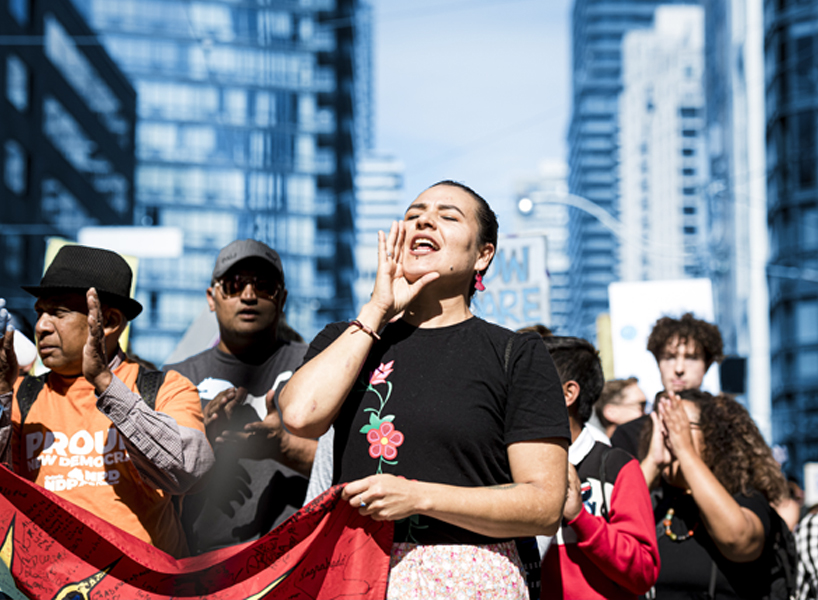Rethinking Persons Day
Persons Day - October 18 - is a day in Canada meant to commemorate the historic decision to include women in the legal definition of “persons”. It marks the time when women were finally granted the right to vote in elections. The problem with celebrating this day? This decision did not include all women - Indigenous women and women of Asian heritage and descent were excluded. It really only reflects gains in voting rights for privileged, white women. While many Canadian women did gain the right to vote during the 1920s, it was not until much later that all women - especially Indigenous and minority women - were allowed to do the same. Indigenous people have been excluded from voting rights until recently. Shockingly, they have only been able to exercise this right for the past 70 years.
We’ve previously written about what Persons Day is - a women’s suffrage movement led by four women advocating for equal rights, most notably voting rights. However, this suffrage movement failed to advocate for all women. In reality, the Canadian suffragette movement was dominated by middle and upper class white women. Indigenous women were completely excluded, as were women of colour. Some sources even point to the fact that the leaders of the movement worked hard to keep female Indigenous voices out of this arena.
Celebrating “Persons’ Day” as the moment when women were finally and legally declared as women, is problematic. White women of a certain socio-economic class do not represent all women!
Image from: https://electionsanddemocracy.ca/context-card-voting-rights-through-time
Indigenous Women Left Out
Even after 1929 when white women were legally recognized as “persons” in Canada, Indigenous women did not have autonomy over their own status. If they married a non-Indigenous man, they lost their own Indigenous status. In 1951, amendments were made that allowed Indigenous women to participate in band elections. First Nations people were given a conditional right to vote status at the time of Confederation in 1867. To do so, they had to give up their treaty rights and Indian status. It wasn’t until 1960, that Prime Minister Diefenbaker repealed parts of the Canada Elections Act, and all Indigenous Canadians were granted the right to vote in federal elections, while maintaining their Indian Status.
Women of Colour Far Behind
The rights of Black women in Canada were also restricted by both their skin colour and their gender. Most women of colour did not gain suffrage at the federal level until 1918, and it was 1940 before all Black women gained voting rights at the provincial levels. It’s worth noting that even when voting rights were first extended to the Black communities, working class people and many from racialized minorities were still restricted from voting since laws required eligible voters to own property or have a taxable net worth. This practice excluded many the right to have their voices heard through voting.
The Wartime Elections Act, passed in Canada in 1917, also stripped away voting rights from many Canadians who had immigrated from so-called ‘enemy’ countries during the wars. Minorities were not given the right to vote until 1948. As we mentioned earlier, it was another 12 years - 1960 - before Indigenous women were granted the right to vote in national elections.
Perhaps rather than celebrating Persons Day, we should celebrate July 1st, 1960, which marked the first time that all women in Canada were finally allowed to cast their vote at the polls.
Time to Reevaluate?
There is a deliberate and systematic destruction of women taking place in Canada. We’ve seen it in the Final Report of the Murdered and Missing Indigenous Women and Girls Inquiry. We’ve seen it in the epidemic of domestic violence rates that grip our country and continue to rise during this pandemic.
The massive civil rights movement of our time - Black Lives Matter - is shining a light on the systemic racism and violence occurring in every area of Canadian society. COVID-19 has revealed how Canada neglects the poor, racialized, isolated and institutionalized in our communities. Among these vulnerable groups of people, women face the additional threat and reality of gendered violence. They are the most vulnerable among the vulnerable.
And so, the question lingers: what exactly are we celebrating on October 18, Persons Day? Can we acknowledge the success of a small and exclusive group of women and acknowledge those who were left behind at the same time? This would be a step towards work for equality and justice for all women. When we achieve protection and rights for women of all colours, backgrounds and ethnicities, we can celebrate. Until then, maybe we hold off?
Resources:
CBC Canada
https://www.thecanadianencyclopedia.ca/en/article/black-voting-rights
https://canadianwomen.org/blog/indigenous-voting-rights/

